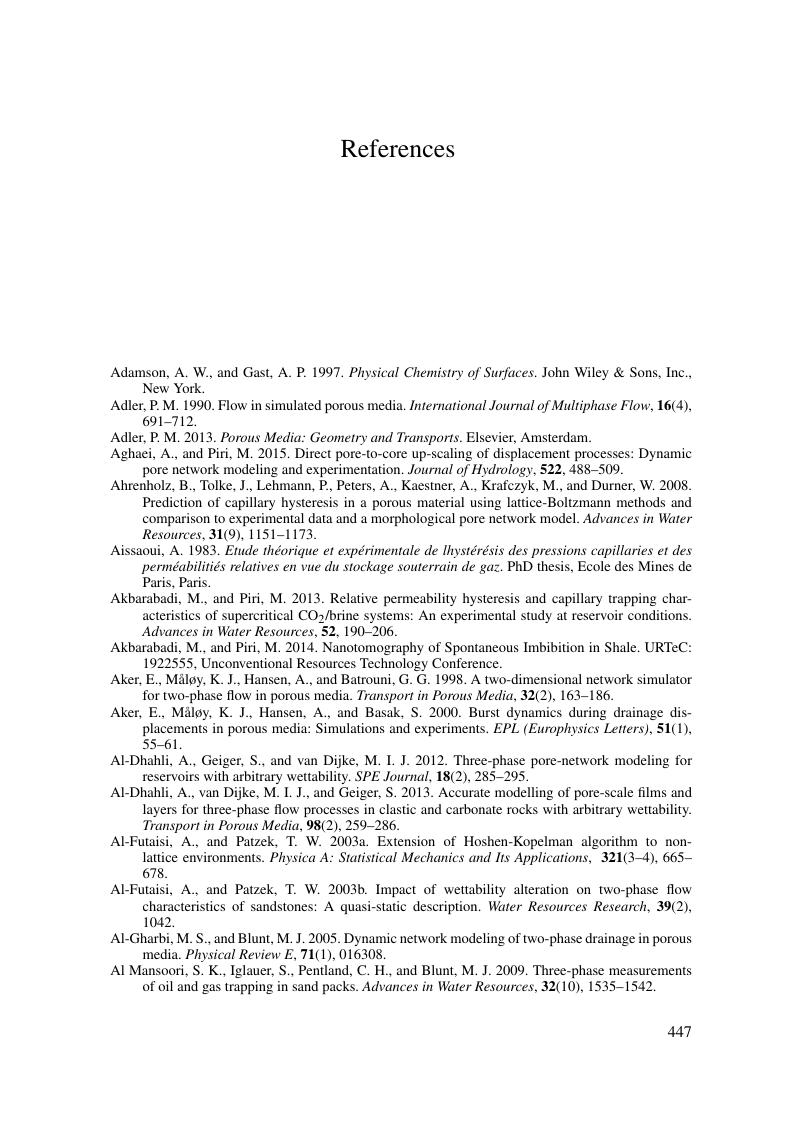Book contents
- Frontmatter
- Dedication
- Contents
- Preface
- Acknowledgements
- List of Symbols
- 1 Interfacial Curvature and Contact Angle
- 2 Porous Media and Fluid Displacement
- 3 Primary Drainage
- 4 Imbibition and Trapping
- 5 Wettability and Displacement Paths
- 6 Navier-Stokes Equations, Darcy's Law and Multiphase Flow
- 7 Relative Permeability
- 8 Three-Phase Flow
- 9 Solutions to Equations for Multiphase Flow
- Appendix Exercises
- References
- Index
- Plate section
- References
References
Published online by Cambridge University Press: 15 February 2017
- Frontmatter
- Dedication
- Contents
- Preface
- Acknowledgements
- List of Symbols
- 1 Interfacial Curvature and Contact Angle
- 2 Porous Media and Fluid Displacement
- 3 Primary Drainage
- 4 Imbibition and Trapping
- 5 Wettability and Displacement Paths
- 6 Navier-Stokes Equations, Darcy's Law and Multiphase Flow
- 7 Relative Permeability
- 8 Three-Phase Flow
- 9 Solutions to Equations for Multiphase Flow
- Appendix Exercises
- References
- Index
- Plate section
- References
Summary

- Type
- Chapter
- Information
- Multiphase Flow in Permeable MediaA Pore-Scale Perspective, pp. 447 - 474Publisher: Cambridge University PressPrint publication year: 2017



